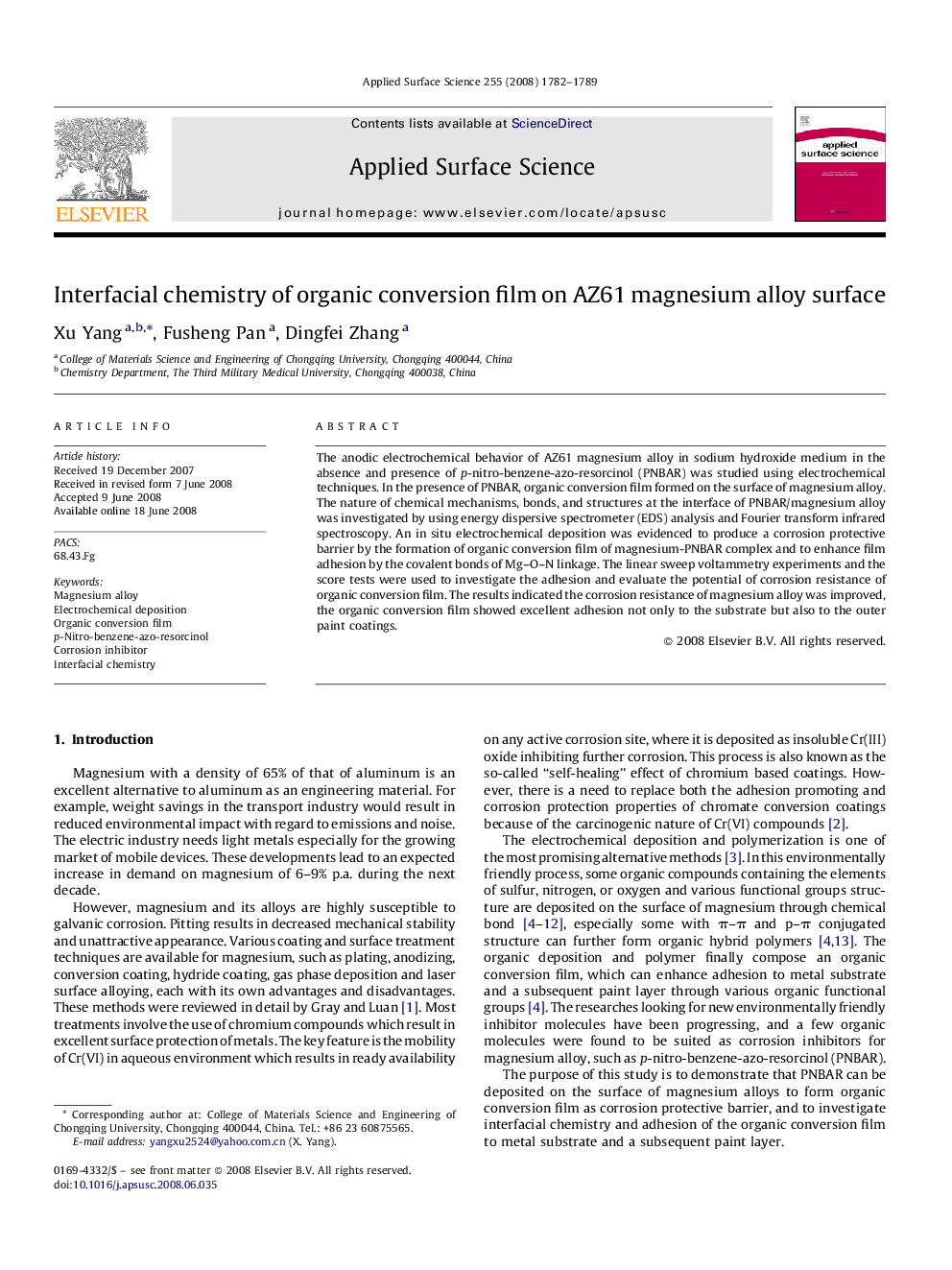| Article ID | Journal | Published Year | Pages | File Type |
|---|---|---|---|---|
| 5363172 | Applied Surface Science | 2008 | 8 Pages |
Abstract
The anodic electrochemical behavior of AZ61 magnesium alloy in sodium hydroxide medium in the absence and presence of p-nitro-benzene-azo-resorcinol (PNBAR) was studied using electrochemical techniques. In the presence of PNBAR, organic conversion film formed on the surface of magnesium alloy. The nature of chemical mechanisms, bonds, and structures at the interface of PNBAR/magnesium alloy was investigated by using energy dispersive spectrometer (EDS) analysis and Fourier transform infrared spectroscopy. An in situ electrochemical deposition was evidenced to produce a corrosion protective barrier by the formation of organic conversion film of magnesium-PNBAR complex and to enhance film adhesion by the covalent bonds of MgON linkage. The linear sweep voltammetry experiments and the score tests were used to investigate the adhesion and evaluate the potential of corrosion resistance of organic conversion film. The results indicated the corrosion resistance of magnesium alloy was improved, the organic conversion film showed excellent adhesion not only to the substrate but also to the outer paint coatings.
Related Topics
Physical Sciences and Engineering
Chemistry
Physical and Theoretical Chemistry
Authors
Xu Yang, Fusheng Pan, Dingfei Zhang,
